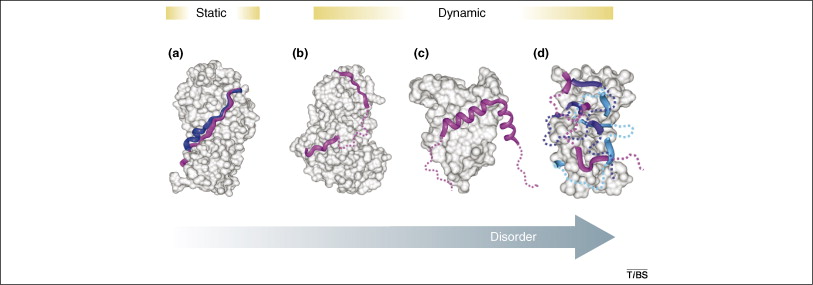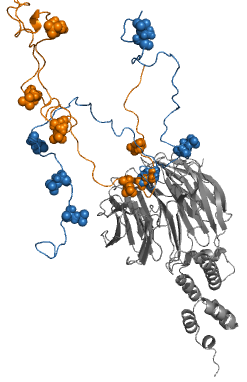Every January MIT offers its students a very underrated short course. The course consists of only one 60 minutes lecture and has no exam at the end. The course name is “How to speak” and professor Patrick Winston was giving it every year for 40 years. All of the concepts and “rules” of speaking that he would talk about in this lecture were already applied in it, giving us a direct example of how science should be communicated.
Before we dive deeper in this topic, maybe we should first clarify why is this even an important topic?
Science 50 years ago and science today are not the same. In the technically advanced era of 21. century it’s hard to keep up with every new breakthrough. I am sure many of you have already experienced this if you’ve spent 3 seconds in research. Stepping in the new field as a master student or a fresh PhD student can be confusing. There are all of these papers already done on every single topic that comes to your mind and as you try filtering them out in order to catch the pace and set the fundamentals for your own research, there are already dozen new papers published in the meantime. The process is exhausting and demotivating. However, if you think about it, often times you spend more time going through a bunch of papers that badly written or that have shady experiments and oversold results, than actually reading the papers you will use as guidance through your own ideas. The explosion in academic papers is the reality we are facing currently and a big part of the reason is the academic pressure put on everyone who enters it. Whatever you do, you must publish. You are valued by how much (rarely also how well) you publish and you are evaluated by the number of citations you have. But okay, let me stop right there because that’s a completely different problem than the one I want to talk about today.
Have you ever found yourself reading a paper form 1970’ where a hard mathematical concept is being explained, but somehow you understood everything (or at least more than you expected)? I have, multiple times. I started noticing that the authors of older papers used much simpler language, they conveyed the ideas in a comprehensive way without over-the-top statements and fancy words that no one understands. Somewhere along the way of expanding science and technology we obviously forgot how to talk about it, how to teach it and how to write about it. And THAT’S what I want to talk about today.
Math really is all around us
Going back to prof. Winston and his lecture from the beginning, in the youtube video description of his last recorded lecture it says “the talk is intended to improve your speaking ability in critical situations by teaching you a few heuristic rules”. Prof. Winston was a computer scientist and somehow he managed to connect speaking with math – which is also one of the thing he talks about in the lecture, how to express your own ideas and passion about the topic you are talking about. I won’t go into too many details of his talk, simply because I truly believe everyone should watch it (or better listen to it), but I will give you a short overview of the main presented ideas. His talk is divided in few sections in the exact ways that he teaches us to do. He talks about how to start a conversation or a presentation and gives a few examples of what to do and what to avoid at the beginning. The most intriguing advice for me in this section was: Do not start a talk with a joke.
He continues to talk about the importance of time and place of your talk, which might seem like thing you already know, but he offers a few interesting points that are very memorable. Then he goes on about the tools that you should use if you are teaching. Also something we all heard about in the school at some point, but even our own teacher were usually bad at implementing those rules in their lectures. Later he talks about how to speak in situations other than teaching (for example at work) and he finishes with a beautiful summary of how to compile all of this into a beautiful informative talk. Oh yes, and a brief note on how to get famous!
The opening sentence of his talk is: “The Uniform Code of Military Justice specifies court material for any officer who sends a soldier into a battle without a weapon. There ought to be a similar protection for students, because students shouldn’t be able to go out into life without the ability to communicate. And that’s because your success in life will be determined largely by your ability to speak, your ability to write and the quality of your ideas, in that order.”
If this didn’t hook you, nothing will. Click here!
Why negotiation is not only important for getting a raise
In the light of prof. Watsons statement about the value of your ability to talk, we will give another good resource for that. At the beginning of this post I also mentioned that in today’s world in general (not just in the academia), you are worth as much as your name is. How you present yourself, the way you talk (or tweet) about your ideas or products or beliefs is 80% of your success. There are many courses out there about how to talk to people, how to be persuasive, how to negotiate etc. and the thing I find most frustrating about them is that they are all focused on getting something with your newly acquired skills – a discount, a raise, a romantic relationship,… Why don’t we teach people how to negotiate and how to interact with others simply in order to better present our emotions or our ideas? Eventually, I found this masterclass on the art of negotiation. The lecturer is Chris Voss, a well known FBI hostage negotiator who persuaded terrorists, bank robbers and kidnappers to see things his way. Although still mostly focused on how to get better deals in life in general, Chris touches upon the topic of communication from the position of a teacher, and he presents some very interesting ideas with clear examples. For those of you who like to read, he has a great book (“Never Split the Difference: Negotiating As If Your Life Depended On It) in which he mostly explains the same concepts and methods as in the masterclass.
Why do I think a good scientist and a good teacher must also be a good negotiator? Because you always need to sell your ideas. Teaching a class on support vector machines? You have to sell them to your students. Talking with your friends about the effects of sea temperature on the marine life? You need to sell it. Otherwise: Click here!
The art of writing
As mentioned, in the ocean of articles that get published monthly, it’s hard enough finding the one that’s relevant to you, let alone being lucky enough to find the one that is also very well written. Personally, I have come across so many badly written papers with great ideas that I started asking myself: how can I make sure that my papers and my presentations don’t end up like that?
This got me searching for some kind of “recipe” for a good article, the do’s and don’ts of writing. One of the best resources that my supervisor actually shared with me is the post titled “ Recipe for a Quality Scientific Paper: Fulfill Readers’ and Reviewers’ Expectations” posted on the website of Sparks Laboratory of structural bioinformatics. The author, prof. Yaoqi Zhou already in the first paragraph makes a very important point: good writing is hard to achieve, but good writing in English when English is not your native language is even harder. Therefore, having a little cheat sheet comes handy, especially when you are just starting your scientific career.
I won’t spoil the contents of this post, especially since I think it’s important for everyone embarking on a research or teaching career to read the entire post, but I will briefly summarize the main parts.
The post is divided into two big sections: how to satisfy the readers and the reviewers and how construct the paper itself. It goes into concise explanations and examples of how to construct good sentences, paragraphs, and figures for the readers and, on the other hand, how to live up to the expectations of the reviewers. The second part is perhaps more practically useful, as it goes into the details of every section of the paper – introduction, methods, results, discussion, and summary. Every advice is backed up with a very good example from which you can directly learn how to implement author’s suggestions.
Prof. Zhou promises that “The purpose of this article is to enable you to better advertise your results through clarity and convincing evidence…. Let the facts speak for themselves.”, and he delivers. Click here!
Repetitio est mater studiorum!
For those of you who are more prone to listening to the lectures and solving exercises, there is a beautifully designed course on Coursera titled “Writing in the Sciences” which essentially goes through more or less the same concepts that prof. Zhou talks about, but in much more detail with much more examples and with many ways for you to directly practice what you’ve just learnt. One of the great things about this course is that the last two weeks of the course are dedicated to other forms of writing – how to write grant proposals, review papers, letters of recommendation, and how to talk to media, how to be interviewed and what approach to take when talking to a broader audience.
I strongly recommend this course for everyone, not only those of you who need it to write better papers, but to improve your writing in general. It is easy to follow, very comprehensive, fun, doesn’t take a lot of your time and, most importantly – it’s free. Click here!
A little extra
Conference poster – a new level of headache. For those of you who stuck around until the end, I would like to offer you a new outlook on how to make scientific posters that people will actually notice at the science conferences. Lately, more and more posters have been constructed this way, and I can say from my personal experience that this really works! The author of the video put a lot of effort in creating a fun video so without further ado: Click me!




